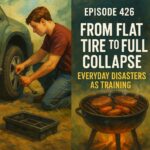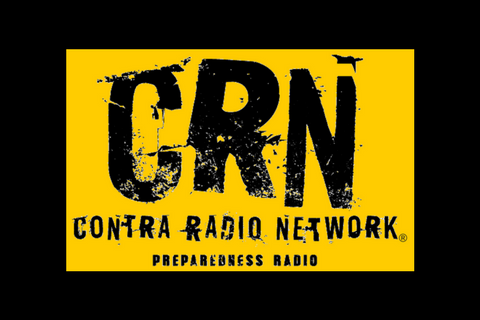Recent Posts
Prepper Burnout: When Readiness Wears You Down | Episode 427
Let’s be honest—prepping can get exhausting. When you’re constantly thinking about what could go wrong, stocking up, learning skills, staying alert… it’s easy to hit a wall. In Episode 427 of the Survival Punk Podcast, we’re diving into something every serious prepper will face eventually: burnout.
"Prepper Burnout: When Readiness Wears You Down | Episode 427"
From Flat Tire to Full Collapse: Everyday Disasters as Training | Episode 426
"From Flat Tire to Full Collapse: Everyday Disasters as Training | Episode 426"
The Housing Market Collapse: What Preppers Need to Know | Episode 425
The housing market is out of control — and it’s not just headlines, it’s real. In this episode of the Survival Punk Podcast, we dive deep into the numbers, the history, and what it means for those of us who want to survive and thrive outside the system. Because when the roof over your head becomes unaffordable, it’s time to start thinking like a prepper, not a consumer.
"The Housing Market Collapse: What Preppers Need to Know | Episode 425"
Keep the Lights On: Surviving the Darkness | Episode 424
In this episode of the Survival Punk Podcast, we’re talking about something most people don’t think twice about—light—until it’s gone. When the grid fails, darkness creeps in fast. And it’s not just inconvenient. It’s dangerous. From navigating your space safely to avoiding accidents, staying productive, and even protecting your mental health, reliable lighting is one of the most overlooked survival essentials.
"Keep the Lights On: Surviving the Darkness | Episode 424."
Embrace Discomfort: Building Mental Resilience for Hard Times | Episode 423
In this episode of the Survival Punk Podcast, we’re getting uncomfortable — on purpose. Because comfort breeds softness, and softness breaks fast under pressure. Real prepping isn’t just about storing food or packing bags. It’s about mental resilience — the ability to keep going when everything sucks. And you don’t get that by staying cozy.
"Embrace Discomfort: Building Mental Resilience for Hard Times | Episode 423"















Follow Us!